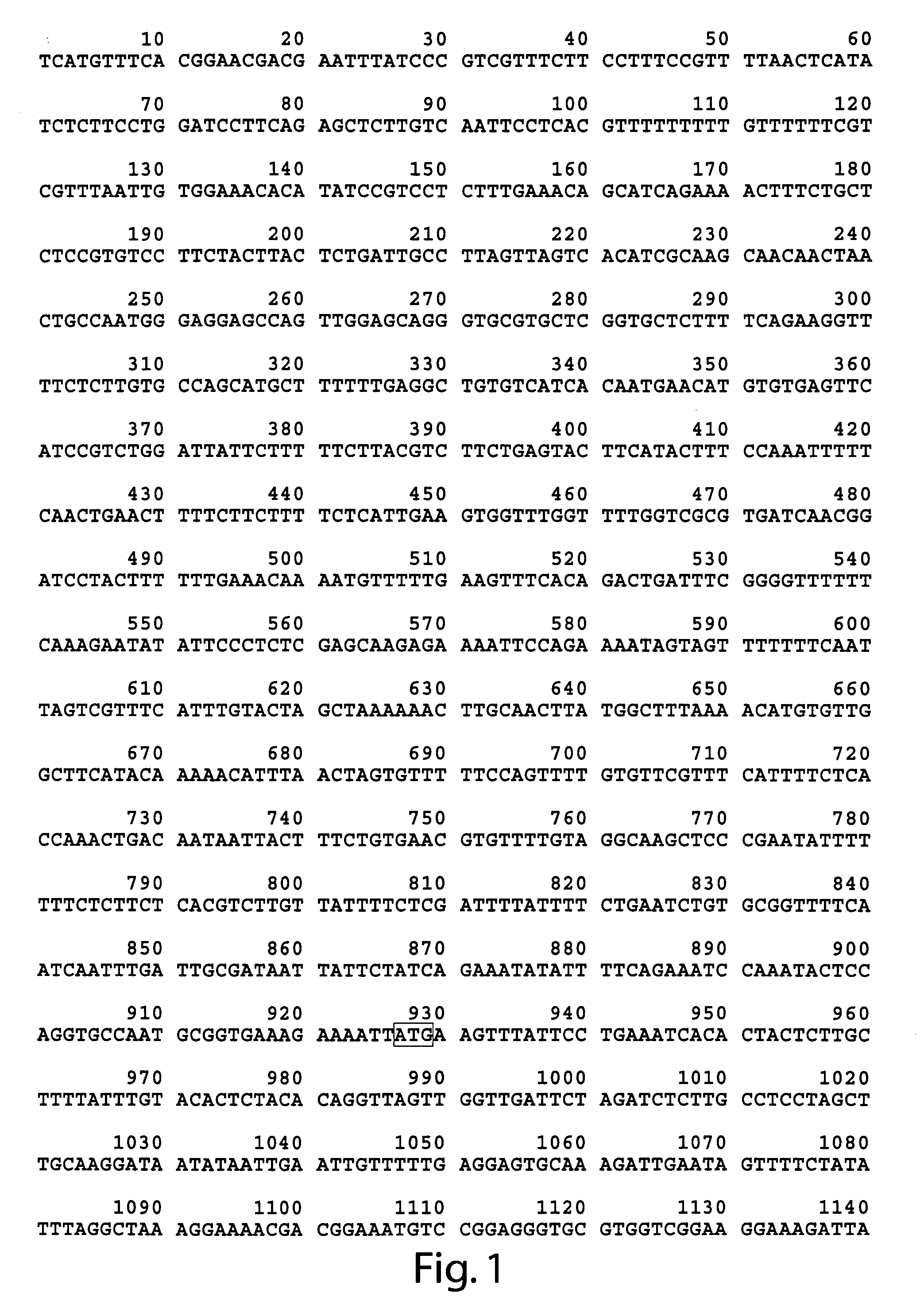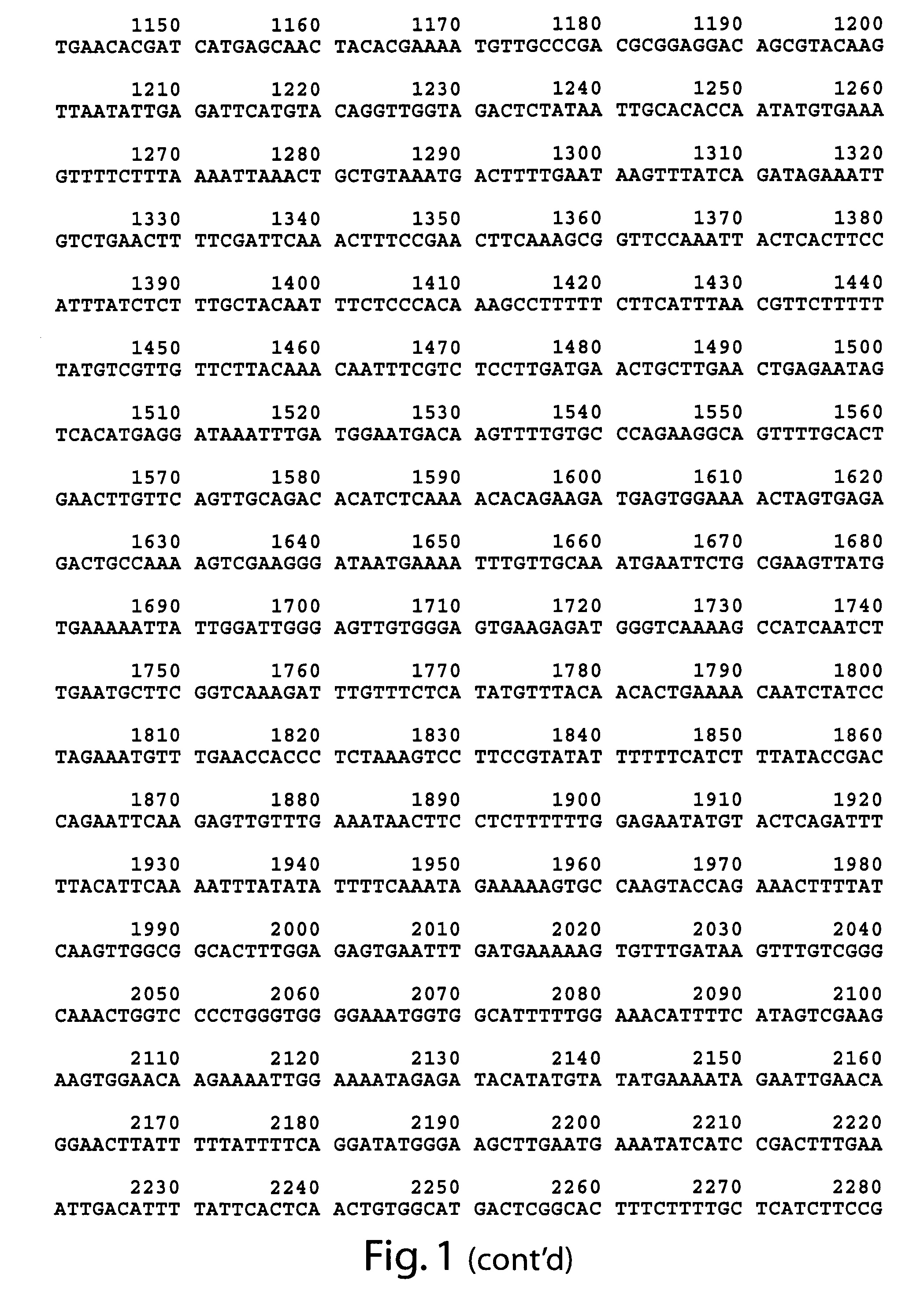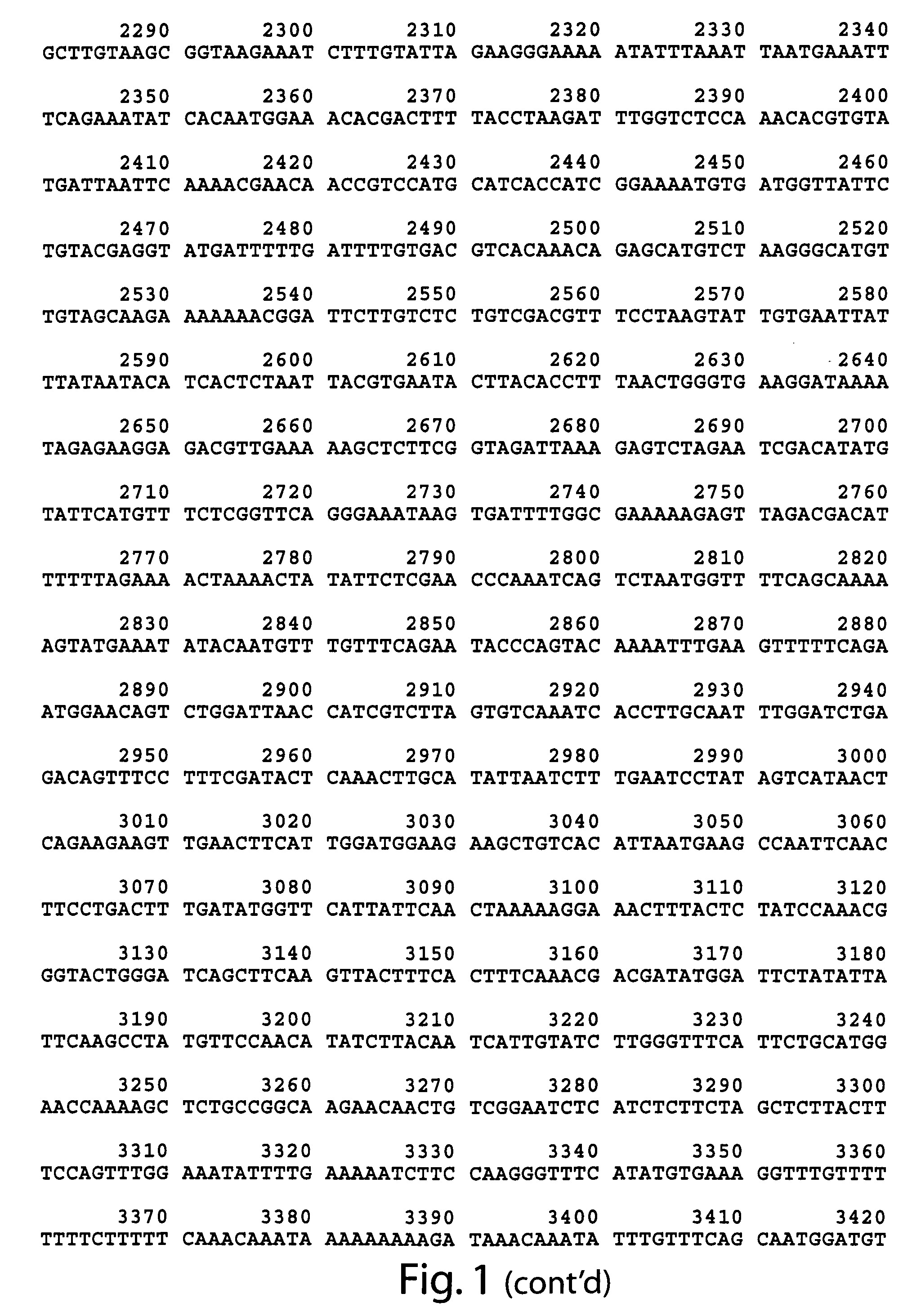Serotonin-gated anion channel
- Summary
- Abstract
- Description
- Claims
- Application Information
AI Technical Summary
Benefits of technology
Problems solved by technology
Method used
Image
Examples
example 1
[0088]Both the wild type (FIG. 2), and mutant mod-1 cDNA have been obtained. The dominant serotonin resistance phenotype of animals carrying the mod-1(n3034) allele was used to genetically map mod-1(n3034) to a 0.7 map-unit interval on chromosome V. Deficiency analysis showed that the dominant serotonin resistance phenotype is not due to a haploinsufficiency of the mod-1 locus. The recessive nature of the serotonin resistance phenotype at early time points was exploited to perform standard transformation rescue experiments, and subsequently, the gene was cloned (FIG. 1).
example 2
MOD-1 Encodes a Ligand-Gated Ion Channel
[0089]The protein encoded by the mod-1 open reading frame responsible for the rescue is structurally similar to ligand-gated ion channels that belong to the nicotinic acetylcholine receptor (nAchR) family (FIG. 3 and FIG. 4). The nAchR family members are all pentameric channels with large N-terminal extracellular ligand-binding domains, four highly conserved transmembrane domains (M1–M4), and relatively divergent cytoplasmic domains between M3 and M4. nAchR family members include channels gated by acetylcholine, glycine, GABA, avermectin, and serotonin. Within the members of the nAchR family, structure-function analysis has been performed primarily on the acetylcholine receptor, but many structural and functional parallels have been seen with the other family members as well. In addition, chimeric channel studies show that there is a great deal of conservation at the functional level, even across the different ligand-gated members of the famil...
example 3
mod-1 Forms a Serotonin-Gated Anion Channel
[0090]MOD-1 was heterologously expressed in Xenopus oocytes, injected with 50 nl of C. elegans RNA, or MOD-1 was expressed in HEK cells transiently transfected by calcium phosphate precipitation. Forty-eight to 72 hours later, the cells or oocytes were screened under a voltage clamp (FIGS. 9A–9C). Application of 100 nM serotonin elicited large inward currents at a holding potential of −70 mV. Uninjected oocytes and nontransfected cells had no response to 10 μM serotonin. Application of 1 mM of other agonists of ligand-gated ion channels, such as acetylcholine, GABA, or glycine elicited little or no response from the MOD-1 channel.
[0091]Pretreatment of wild-type C. elegans with mianserin or methiothepin, serotonin receptor antagonists, prevents food-deprived animals from exhibiting the wild-type enhanced slowing response after they encounter bacteria. For this reason, even though both compounds have thus far been considered primarily to be a...
PUM
 Login to View More
Login to View More Abstract
Description
Claims
Application Information
 Login to View More
Login to View More - R&D
- Intellectual Property
- Life Sciences
- Materials
- Tech Scout
- Unparalleled Data Quality
- Higher Quality Content
- 60% Fewer Hallucinations
Browse by: Latest US Patents, China's latest patents, Technical Efficacy Thesaurus, Application Domain, Technology Topic, Popular Technical Reports.
© 2025 PatSnap. All rights reserved.Legal|Privacy policy|Modern Slavery Act Transparency Statement|Sitemap|About US| Contact US: help@patsnap.com



